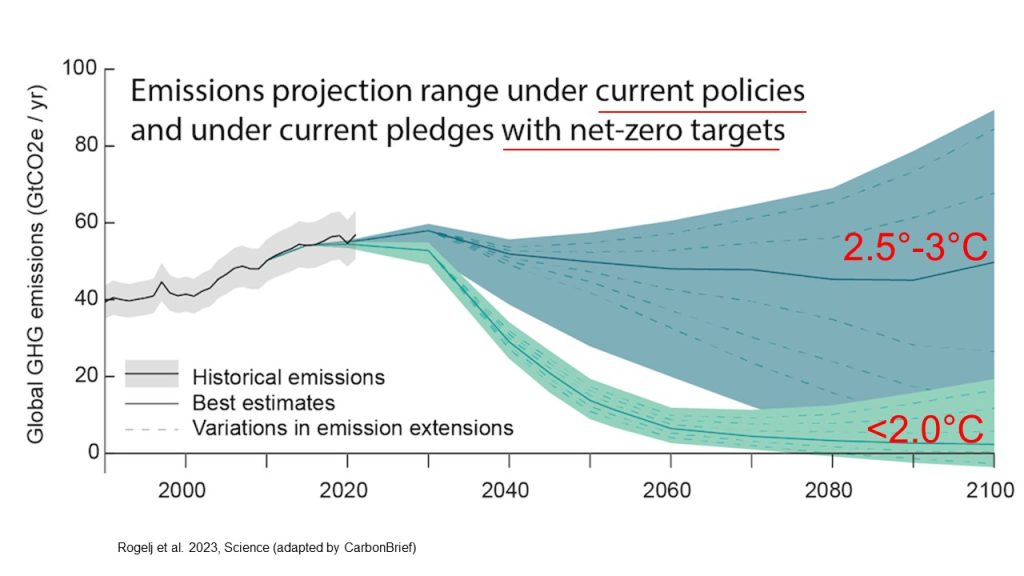
The Legacy of the Carbon Footprint: Future Sea-Level Elevation
The carbon dioxide emissions you produce today do not simply disappear. They persist, build up, and will continue to elevate seawater levels along coastlines for centuries to come. Recent research provides a sobering analysis: emissions generated between now and 2090 could result in nearly one meter of sea-level rise by the year 2300, with the majority of that future inundation still preventable if immediate and substantial reductions are initiated.
The study, released in Nature Climate Change by experts from the International Institute for Applied Systems Analysis and collaborating organizations, employs a distinctive approach. Instead of only forecasting sea levels up to 2100, the team examined how emissions produced during specific decades this century will perpetuate ocean elevation for hundreds of years thereafter. This technique clarifies cause and effect across timescales that far exceed national policy frameworks.
“It is typical for sea-level rise studies to provide predictions up to 2100 based on a standard array of scenarios, which does not allow for isolating the extended sea-level consequences of today’s greenhouse gas outputs,” states lead author Alexander Nauels, a senior research scholar at IIASA. “However, we must investigate these effects on timescales extending beyond 2100, because oceans and ice sheets continue to react for centuries.”
The 30-Year Horizon
The figures are significant. Under current strategies, emissions from 2020 to 2050 alone guarantee approximately 0.3 meters of extra elevation by 2300. This may seem insignificant until you recognize that it signifies the distinction between a seawall succeeding or failing, between a community adapting or having to move. If these policies are maintained until 2090, the commitment rises to about 0.8 meters globally.
This is where the primary conclusion of the study surfaces: around 0.6 meters of that guaranteed rise could still be avoided if reductions in emissions aligned with the Paris Agreement targets commence now. The researchers are quantifying something that climate scientists have historically sensed intuitively but have had difficulty conveying in terms relevant to policy. Every ton of carbon dioxide emitted over the coming decades holds a multi-century cost.
The physical processes are straightforward, albeit gradual. Oceans absorb heat and expand. Ice sheets in Greenland and Antarctica react to warmer air and water, losing mass into the ocean. These mechanisms function on timescales measured in centuries, not electoral schedules. A CO2 molecule released in 2030 will still affect ocean temperatures in 2200.
Islands and Inequalities
The global average conceals regional inequalities. Pacific island nations, which are already among the most susceptible to climate challenges, will encounter sea-level rise surpassing the global average. The same applies to other low-lying coastal areas where millions reside within mere meters of present high-tide lines.
“We also demonstrate that some areas like the vulnerable Pacific islands will face even greater sea-level rise than the global norm,” points out coauthor Matthew Palmer from the UK Met Office. “These regional and local shifts must be understood and addressed in much finer detail to better guide decision-makers.”
The study arrives at a time when coastal planners are contending with adaptation timelines. Infrastructure built today, including seawalls and drainage systems, as well as raised structures, must consider conditions not just for 2050 or 2100 but for centuries into the future. The researchers assert that their findings should guide these calculations, offering a clearer understanding of what emissions pathways imply for far-off yet certain futures.
Coauthor Aimée Slangen from the Royal Netherlands Institute of Sea Research highlights the adaptation aspect. The decisions made in the upcoming decades, she states, will influence when more adaptation limits are reached and how many options remain for coastal populations in at-risk regions. Certain thresholds, once surpassed, could entirely eliminate specific futures.
The study refrains from promoting either optimism or despair but focuses on meticulous accounting. It assesses what resources have been consumed, what remains within the budget, and what the long-term costs will entail. Nauels articulates it clearly: the gap between decisive climate action today and ongoing high emissions is measured not only in degrees of warming but in meters of sea-level rise that will transform coastlines globally for centuries. Crucially, he notes, we still have the chance to restrict the sea-level rise obligation we leave for future generations.
Whether this chance will be taken remains the question for policymakers and voters in the near future. The oceans, enduring and relentless, will reveal the outcomes long after these choices are made.
“It is typical for sea-level rise studies to provide predictions up to 2100 based on a standard array of scenarios, which does not allow for isolating the extended sea-level consequences of today’s greenhouse gas outputs.”
“We also demonstrate that some areas like the vulnerable Pacific islands will face even greater sea-level rise than the global norm.”
Nature Climate Change: [10.1038/s41558-025-02452-5](https://doi.org/10.1038/s41558-025-02452-5)
There’s no paywall here
*If our reporting has informed or inspired you, please consider